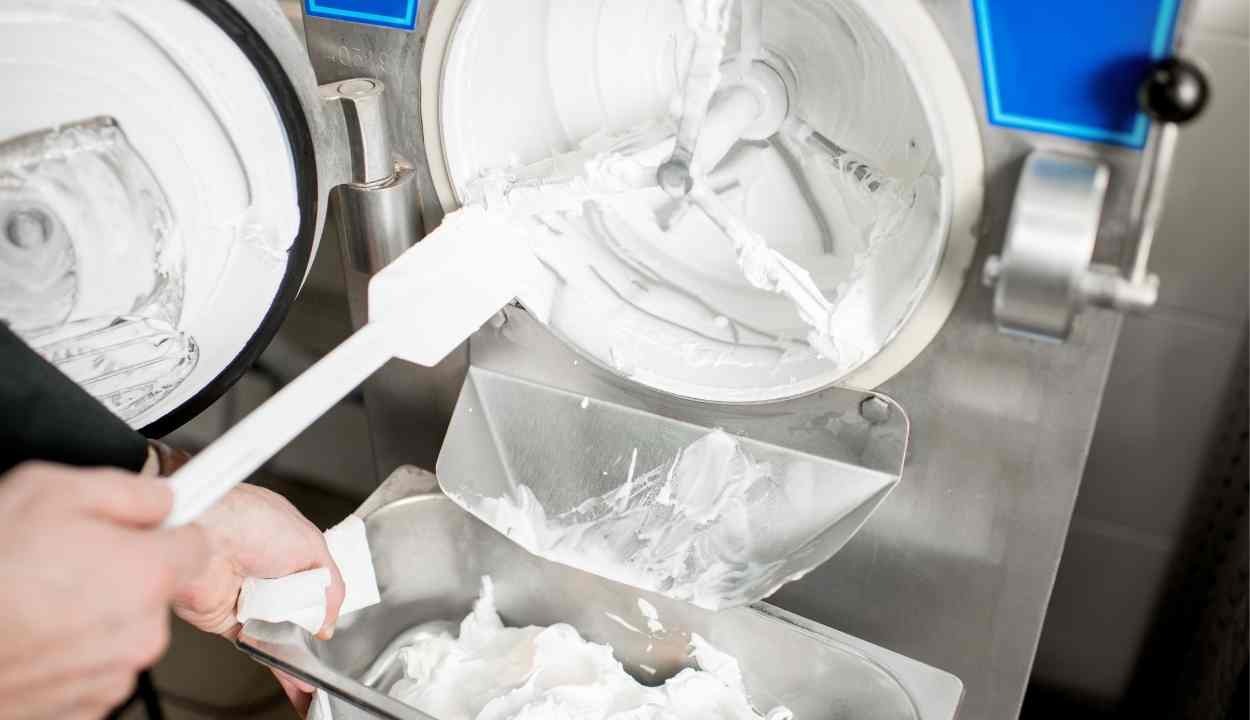

Articles
How Does Ice Cream Machine Work
Modified: February 27, 2024
Learn how ice cream machines work and the process behind making delicious frozen treats. Explore the science and techniques in our informative articles.
(Many of the links in this article redirect to a specific reviewed product. Your purchase of these products through affiliate links helps to generate commission for Storables.com, at no extra cost. Learn more)
Introduction
Ice cream is a delightful treat loved by people of all ages. Whether it’s a classic vanilla cone, a decadent chocolate sundae, or a refreshing fruit sorbet, ice cream never fails to bring us joy. But have you ever wondered how that creamy, frozen goodness is made? That’s where the fascinating world of ice cream machines comes into play.
Ice cream machines are ingenious devices that take simple ingredients like milk, cream, sugar, and flavorings and transform them into a frozen dessert masterpiece. These machines are designed to carry out several key processes simultaneously, resulting in the smooth and creamy texture we all know and love.
In this article, we will dive into the inner workings of an ice cream machine and uncover the secrets behind its operation. We will explore the components, the freezing process, the mixing process, and more. So, let’s embark on this delicious journey and discover how these incredible machines bring frozen delights to our taste buds.
Key Takeaways:
- Dive into the fascinating world of ice cream machines and uncover the secrets behind their operation, from the freezing and mixing processes to the addition of mix-ins, and savor the joy of creating creamy homemade ice cream.
- Discover the essential components and intricate processes that make ice cream machines work their magic, from freezing and churning to dispensing, and embrace your inner ice cream enthusiast to create delightful frozen treats.
Read more: How Does The Ice Cream Maker Work
Components of an Ice Cream Machine
Ice cream machines consist of several essential components that work together to create the perfect frozen treat. Here are the key components you’ll find in most ice cream machines:
- Freezer bowl: The freezer bowl is the heart of an ice cream machine. It is a double-walled container filled with a special liquid that freezes when placed in the freezer. The freezing process of the liquid in the bowl is crucial for achieving the desired consistency of the ice cream.
- Motor: The motor powers the machine and drives the inner paddle or dasher, which is responsible for mixing and churning the ice cream mixture. The motor’s strength and speed determine the efficiency and effectiveness of the ice cream making process.
- Control panel: The control panel allows the user to set the desired parameters for making ice cream, such as the mixing time or the type of program (soft serve, gelato, sorbet, etc.). Some advanced models even offer additional features like pre-cooling options or automatic shut-off.
- Inner paddle or dasher: This component is attached to the motor and rotates inside the freezing bowl. The paddle’s motion mixes and incorporates air into the ice cream mixture, creating a smooth and creamy texture. It also prevents the formation of ice crystals and ensures even freezing.
- Lid: The lid covers the top of the machine, preventing the escape of cold air and maintaining a consistent temperature inside. Some models have a transparent lid, allowing you to monitor the progress and observe the magic happening inside.
- Dispenser: In some machines, a built-in dispenser is included. This feature allows for easy serving and eliminates the need for additional utensils or bowls. With a simple press of a button or lever, the ice cream is conveniently dispensed into cones or dishes.
- Removable parts: Many ice cream machines come with removable parts such as the freezer bowl, paddle, and lid. This makes cleaning the machine a breeze and allows for easy storage when not in use.
These components work together harmoniously to create the perfect environment for making ice cream. Now that we have explored the different parts of an ice cream machine, let’s dive into the processes involved in producing that creamy frozen treat.
Freezing Process
The freezing process is a crucial step in producing smooth and creamy ice cream. It involves the solidification of the liquid mixture to form a frozen dessert. Let’s take a closer look at how the freezing process works in an ice cream machine:
1. Pre-freezing the bowl: Before making ice cream, the freezer bowl needs to be pre-frozen. This typically involves placing it in a freezer for several hours or overnight. The special liquid inside the walls of the bowl freezes, creating a cold surface that will help freeze the ice cream mixture.
2. Adding the ice cream mixture: Once the freezer bowl is adequately frozen, the ice cream mixture is poured into the bowl. The bowl is then fitted onto the machine’s base, and the lid is securely closed.
3. Cooling the mixture: The ice cream machine’s motor starts rotating the inner paddle or dasher, which stirs the mixture continuously. As the paddle moves, it incorporates air into the mixture, preventing the formation of large ice crystals and making the ice cream smoother. At the same time, the bowl’s frozen surface cools the mixture, causing it to solidify gradually.
4. Freezing and churning: As the mixture cools, the ice cream machine’s freezing capability ensures that heat is rapidly extracted from the mixture. The rapid freezing process prevents the formation of large ice crystals and contributes to the smooth texture of the ice cream. The continuous churning action of the paddle also helps break down any ice crystals that may form, resulting in a creamy consistency.
5. Monitoring the freezing process: It’s important to keep an eye on the freezing process to ensure the ice cream reaches the desired consistency. The control panel may have a timer or an indicator that lets you know when the ice cream is ready. The length of time needed for freezing can vary depending on the machine and the recipe.
6. Removing and storing the ice cream: Once the freezing process is complete, the ice cream can be scooped or dispensed from the machine. It is usually stored in a separate container and placed in the freezer for further hardening before serving.
The freezing process in an ice cream machine is a delicate balance between temperature, motion, and time. The controlled environment created by the machine ensures that the ice cream freezes evenly and becomes delightfully creamy. Now that we understand the freezing process, let’s explore the next step in creating delicious ice cream – the mixing process.
Mixing Process
The mixing process is a crucial step in creating the perfect texture and flavor in ice cream. It involves combining the ingredients to form a homogenous mixture before the freezing and churning process. Let’s explore how the mixing process works in an ice cream machine:
1. Preparation of the ice cream base: The ice cream base is the foundation of any ice cream recipe. It typically consists of milk, cream, sugar, and flavorings such as vanilla extract. In some cases, egg yolks or stabilizers may also be added to enhance the texture and stability of the ice cream. The ingredients are measured and combined in a separate bowl or container.
2. Pouring the ice cream base into the machine: Once the ice cream base is prepared, it is poured into the ice cream machine’s freezer bowl. The bowl is then attached to the machine’s base, and the lid is closed securely to prevent any spills or leaks.
3. Initiating the mixing process: The machine’s motor starts rotating the inner paddle or dasher, which mixes the ice cream base continuously. The paddle’s motion incorporates air into the mixture, creating a lighter and creamier texture. This process is also known as “overrun” and determines the volume and texture of the final ice cream.
4. Even distribution of flavorings and mix-ins: If you’re adding any flavorings or mix-ins to your ice cream, such as chocolate chips, fruit pieces, or cookie crumbs, they are usually added during the mixing process. The rotating paddle ensures that these additions are evenly distributed throughout the mixture, providing bursts of flavor and texture in every bite.
5. Monitoring the mixing process: It’s important to monitor the mixing process to achieve the desired consistency. The ice cream machine may have a pre-set mixing time, or you can adjust it manually based on the recipe or your preference. The control panel or timer on the machine allows you to keep track of the mixing time.
The mixing process is essential for creating a well-blended and flavorful ice cream base. The continuous motion of the paddle helps incorporate air, improve texture, and distribute flavorings evenly. Now that we understand the mixing process, let’s move on to the next step – the churning process.
Churning Process
The churning process is a crucial step in the ice cream making process. It transforms the mixed ice cream base into a creamy and smooth frozen dessert. Let’s delve into how the churning process works in an ice cream machine:
1. Continued mixing and freezing: After the mixing process, the ice cream machine continues to rotate the inner paddle or dasher while the freezing bowl remains frozen. This continuous motion ensures even distribution of the ice cream mixture and promotes the formation of small ice crystals, resulting in a smoother and creamier texture.
2. Breaking down ice crystals: As the ice cream mixture freezes, the churning process helps break down any large ice crystals that may have formed. The constant motion of the paddle disrupts the ice crystals, resulting in a smoother and more velvety texture.
3. Incorporating air: The churning process also incorporates air into the ice cream, a crucial step in achieving the desirable texture. The movement of the paddle whips air molecules into the mixture, increasing its volume and creating a fluffier consistency. The amount of air incorporated during churning is referred to as “overrun” and can vary depending on the desired style of ice cream (e.g., premium, light, or super-premium).
4. Monitoring the churning process: The duration of the churning process depends on various factors, including the machine’s settings, the recipe, and personal preference. The ice cream machine may have a pre-set churning time, or you can manually adjust it based on your desired texture. Paying attention to the churning time is crucial, as under-churning may result in a dense and icy texture, while over-churning can incorporate too much air, resulting in a lighter and less creamy ice cream.
The churning process is a delicate balance between freezing, mixing, and incorporating air. The continuous rotation of the paddle and the freezing temperature of the bowl work together to create a smooth, creamy, and aerated ice cream base. Now that we have discussed the churning process, let’s move on to the next step – the addition of mix-ins.
To make ice cream, an ice cream machine churns the mixture while freezing it, incorporating air to create a smooth texture. Make sure the mixture is well chilled before pouring it into the machine for best results.
Read more: How Does A Soft Serve Ice Cream Machine Work
Addition of Mix-ins
When it comes to ice cream, the addition of mix-ins adds an extra element of excitement and flavor. Whether it’s chunks of chocolate, swirls of caramel, or pieces of fruit, mix-ins can elevate your ice cream to a whole new level. Let’s explore how mix-ins are incorporated into the ice cream-making process:
1. Preparation of mix-ins: Before adding mix-ins to your ice cream, it’s important to prepare them beforehand. This might involve chopping nuts, melting chocolate, or pureeing fruits. The size and consistency of the mix-ins will depend on personal preference and the desired texture of the final ice cream.
2. Addition during the churning process: Once the ice cream base has reached the desired consistency during churning, it’s time to add the mix-ins. Depending on the ice cream machine, there are a few different methods for incorporating mix-ins:
- Layering method: Some machines have a separate compartment or chute where you can add mix-ins while the ice cream is being dispensed. This allows for even distribution of mix-ins throughout the ice cream.
- Manual method: Alternatively, if your ice cream machine doesn’t have a specific compartment for mix-ins, you can stop the machine during the churning process and add the mix-ins manually. Simply pause the machine, sprinkle or layer the mix-ins on top of the partially churned ice cream, and then resume churning.
- Mix-in container: Some ice cream machines come with a removable container that sits on top of the churning bowl. This container allows you to add mix-ins separately and lets them mix in as the ice cream churns. This method ensures even distribution of mix-ins without interrupting the churning process.
3. Distribution of mix-ins: As the ice cream machine churns, the mix-ins are dispersed throughout the ice cream base. The continuous motion of the paddle helps blend the mix-ins uniformly, ensuring that every spoonful of ice cream contains a delightful burst of flavor and texture.
4. Overcoming mix-in challenges: It’s important to consider the texture and consistency of the mix-ins. For example, if you’re adding chunks of chocolate or nuts, you might need to freeze them beforehand to prevent them from melting and losing their shape. Similarly, if you’re incorporating fruit puree, it’s essential to ensure it’s well-chilled to avoid compromising the freezing process.
The addition of mix-ins allows for endless creativity and customization when making ice cream. From crunchy bits to gooey ribbons, mix-ins provide an enjoyable surprise in every scoop. Now that we’ve learned about adding mix-ins, let’s move on to the final step – the dispensing process.
Dispensing Process
The dispensing process is the final step in the ice cream-making journey. It’s the moment we’ve all been waiting for – enjoying a scoop or two of delicious homemade ice cream. Let’s explore how the dispensing process works in an ice cream machine:
1. Completion of the churning process: After the ice cream base has been churned to the desired consistency, the machine’s timer or indicator will notify you that it’s done. At this point, the ice cream is ready to be dispensed.
2. Dispenser options: Ice cream machines offer different dispensing options based on their design. Some machines have a built-in dispenser attached to the machine’s base. With a simple press of a lever or button, the ice cream is released from the machine, neatly filling cones or bowls.
3. Manual dispensing: If your ice cream machine doesn’t have a built-in dispenser, you can manually scoop the ice cream from the freezing bowl using an ice cream scoop or spoon. This method allows for more control over the portion size and allows for creative presentation options such as swirls or layers.
4. Serving and presentation: Once the ice cream has been dispensed, it’s time to serve and enjoy! You can top the ice cream with a variety of delicious extras, such as sprinkles, chocolate sauce, whipped cream, or fresh fruit. The possibilities are endless, so get creative and make your ice cream experience even more remarkable.
5. Storage: If there is any leftover ice cream, it can be transferred to an airtight container and stored in the freezer. Properly stored ice cream can be enjoyed for several days, although it’s always best to consume it within a week for the best flavor and texture.
The dispensing process is the culmination of the hard work and anticipation involved in making ice cream. It’s the moment where we savor the fruits of our labor and indulge in the sweet delight of homemade frozen dessert. Now that we’ve covered the dispensing process, let’s explore the essential topic of cleaning and maintaining an ice cream machine.
Cleaning and Maintenance
Cleaning and maintenance are crucial for ensuring the longevity and optimal performance of your ice cream machine. Regular upkeep will not only keep your machine in top shape but also prevent flavor contamination and ensure the production of high-quality ice cream. Here are some essential tips for cleaning and maintaining your ice cream machine:
1. Read the manufacturer’s instructions: Before starting the cleaning process, refer to the manufacturer’s instructions specific to your ice cream machine. These instructions will provide you with detailed guidance on how to disassemble, clean, and reassemble the machine properly.
2. Unplug the machine: Always ensure that the machine is unplugged before starting the cleaning process to avoid any electrical accidents.
3. Disassemble the parts: If your ice cream machine has removable parts, such as the freezer bowl, paddle, and lid, disassemble them according to the manufacturer’s instructions.
4. Clean the removable parts: Wash the removable parts with warm soapy water, using a gentle dish detergent. Scrub each part carefully, paying attention to areas where ice cream residue may be present. Rinse thoroughly to remove any soap residue.
5. Wipe down the machine: Use a damp cloth to wipe down the exterior of the machine, removing any spills, stains, or dirt.
6. Dry the parts: After washing, make sure to dry all the removable parts thoroughly before reassembling them. Moisture left on the parts can affect their performance and promote the growth of bacteria.
7. Store the machine properly: When not in use, store your ice cream machine in a clean, dry, and well-ventilated area to prevent the accumulation of dust or moisture.
8. Maintain the freezing bowl: To keep the freezing bowl in good condition, avoid using abrasive cleaning agents or scrubbers that may damage the surface. Before each use, ensure that the freezer bowl is completely dry and free from any water droplets to prevent ice crystals from forming prematurely.
9. Regular maintenance checks: Periodically inspect your ice cream machine for any signs of damage, such as frayed electrical cords or loose components. If you notice any issues, consult the manufacturer or a professional technician for repairs or maintenance.
Following these cleaning and maintenance practices will help ensure the longevity of your ice cream machine, keep it in optimal condition, and allow you to continue creating delectable frozen treats for years to come.
Conclusion
Ice cream machines are marvelous inventions that bring joy to our taste buds, allowing us to create creamy and delicious frozen treats right in the comfort of our homes. Understanding the inner workings of these machines, from the components to the various processes involved, gives us a deeper appreciation for the art of ice cream making.
We explored the components of an ice cream machine, including the freezer bowl, motor, control panel, and inner paddle. These components work together harmoniously to create the perfect environment for freezing and churning the ice cream mixture.
The freezing process ensures the gradual solidification of the liquid mixture, while the mixing process blends the ingredients together and incorporates air for a smoother texture. The churning process continues the mixing while breaking down ice crystals and incorporating even more air, resulting in a creamy and velvety ice cream base.
The addition of mix-ins adds a delightful twist to our ice cream, allowing us to experiment with various flavors and textures. Whether it’s chocolate chunks, fruit swirls, or crunchy nuts, mix-ins provide bursts of excitement in every bite.
Finally, the dispensing process is the moment we’ve been waiting for – enjoying our homemade ice cream. From using a built-in dispenser to manually scooping the ice cream, this step allows us to present our creations and indulge in their delectable flavors.
However, our journey doesn’t end there. Proper cleaning and maintenance are vital for keeping our ice cream machines in optimal condition. Regular upkeep ensures the longevity of the machine, prevents flavor contamination, and ensures the production of high-quality ice cream for years to come.
So, the next time you dip your spoon into a scoop of creamy homemade ice cream, remember the intricate processes that went into creating that delightful treat. From freezing and mixing to churning and dispensing, ice cream machines truly work their magic to bring us moments of pure joy and satisfaction.
Now that you understand the inner workings of an ice cream machine, it’s time to get creative and experiment with flavors, mix-ins, and techniques. Embrace your inner ice cream enthusiast and embark on your own frozen dessert journey. Enjoy the process, and most importantly, savor each spoonful of your homemade frozen creation. Happy ice cream making!
Frequently Asked Questions about How Does Ice Cream Machine Work
Was this page helpful?
At Storables.com, we guarantee accurate and reliable information. Our content, validated by Expert Board Contributors, is crafted following stringent Editorial Policies. We're committed to providing you with well-researched, expert-backed insights for all your informational needs.
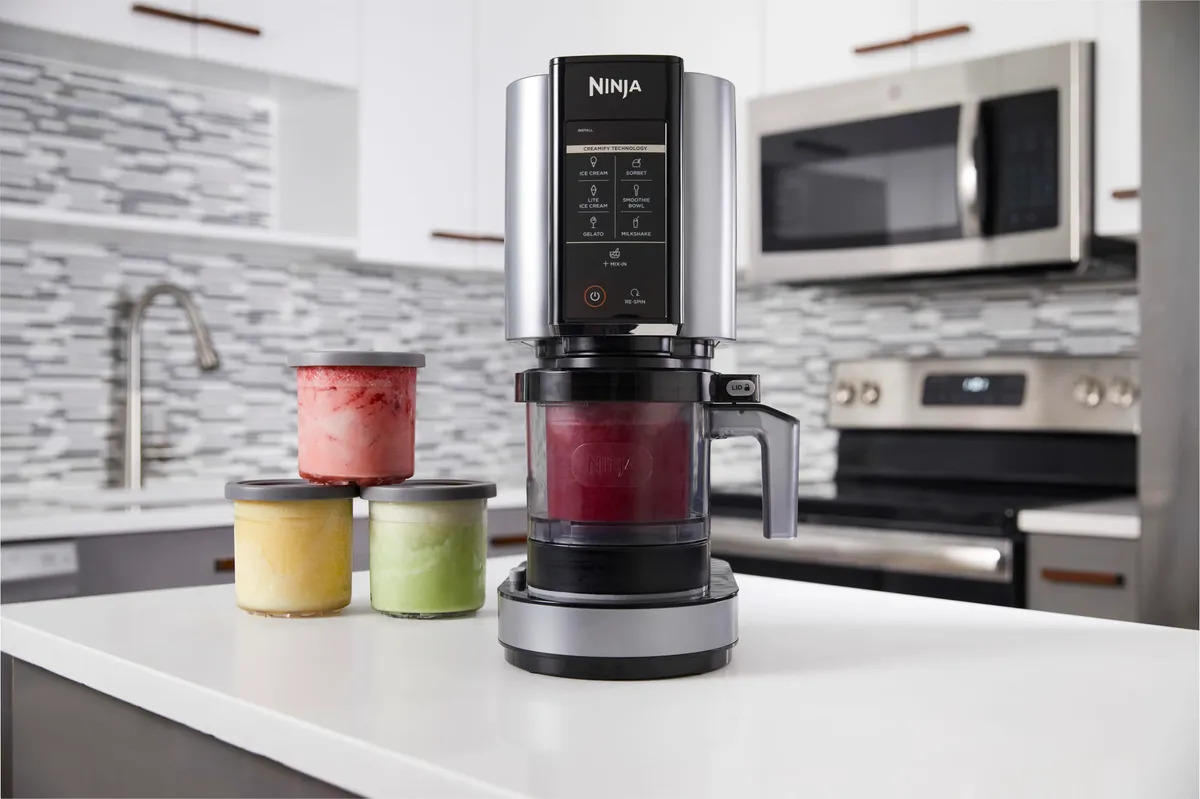
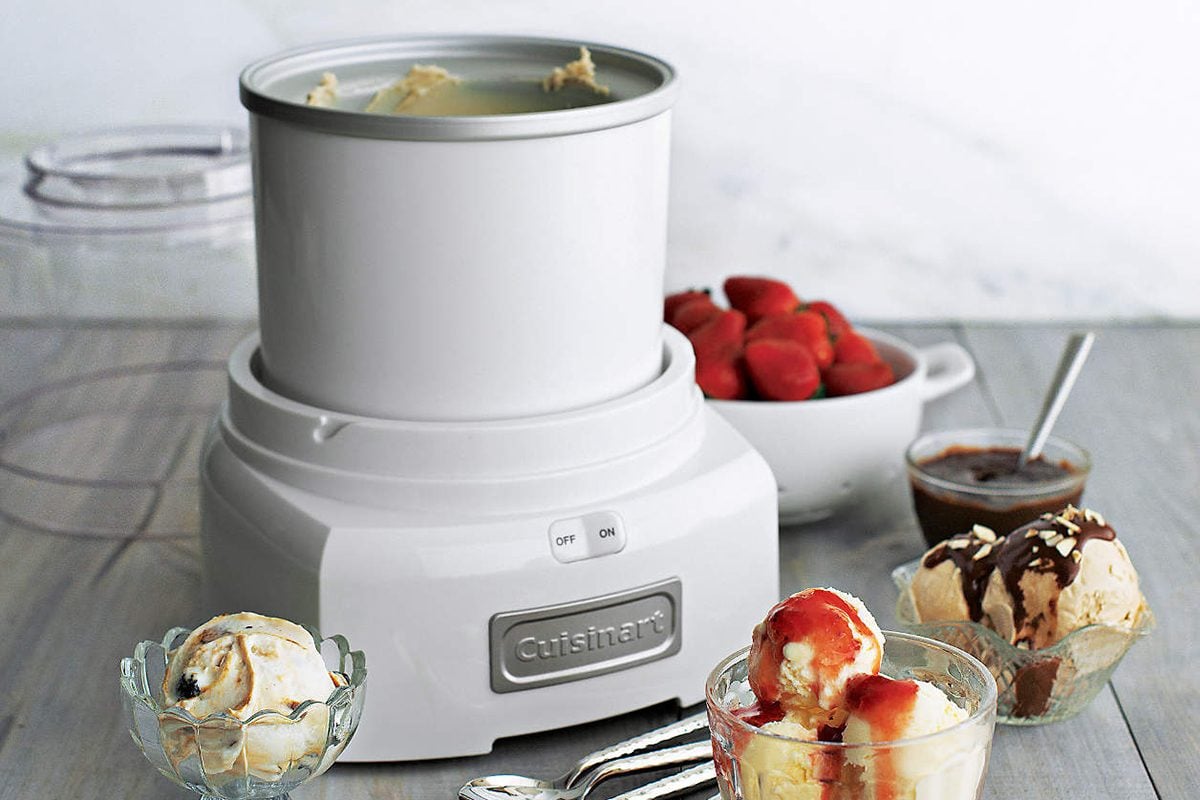
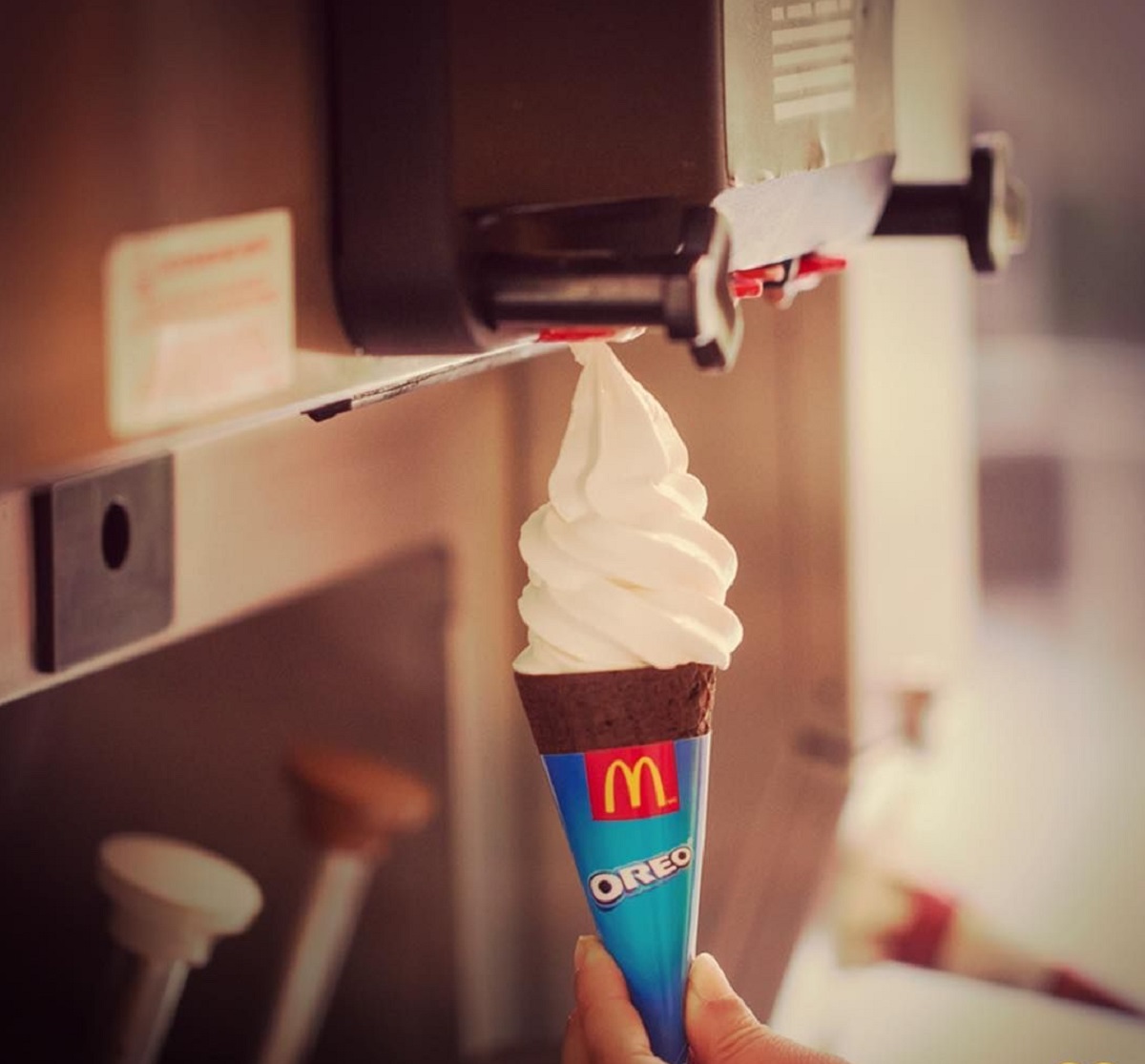
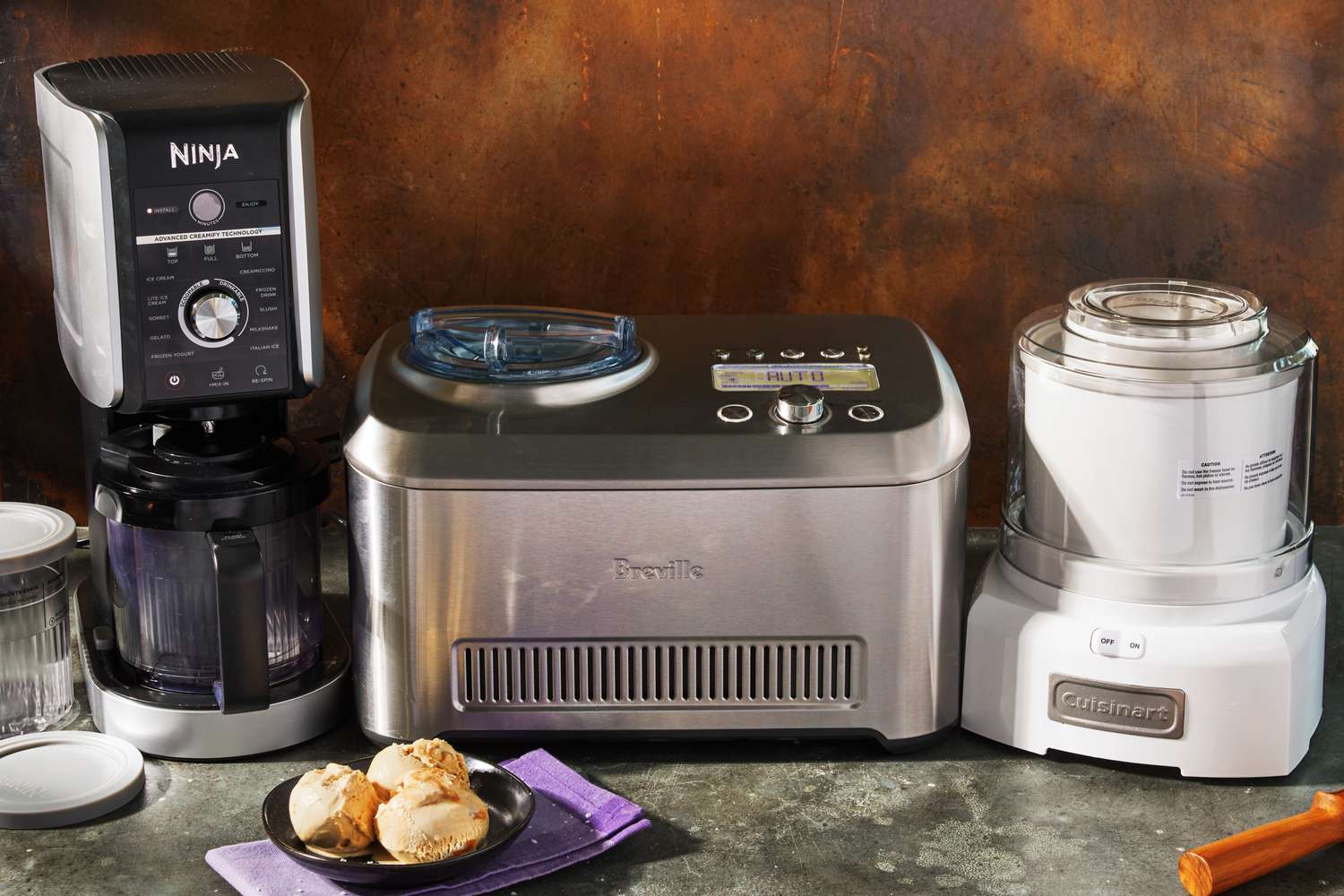
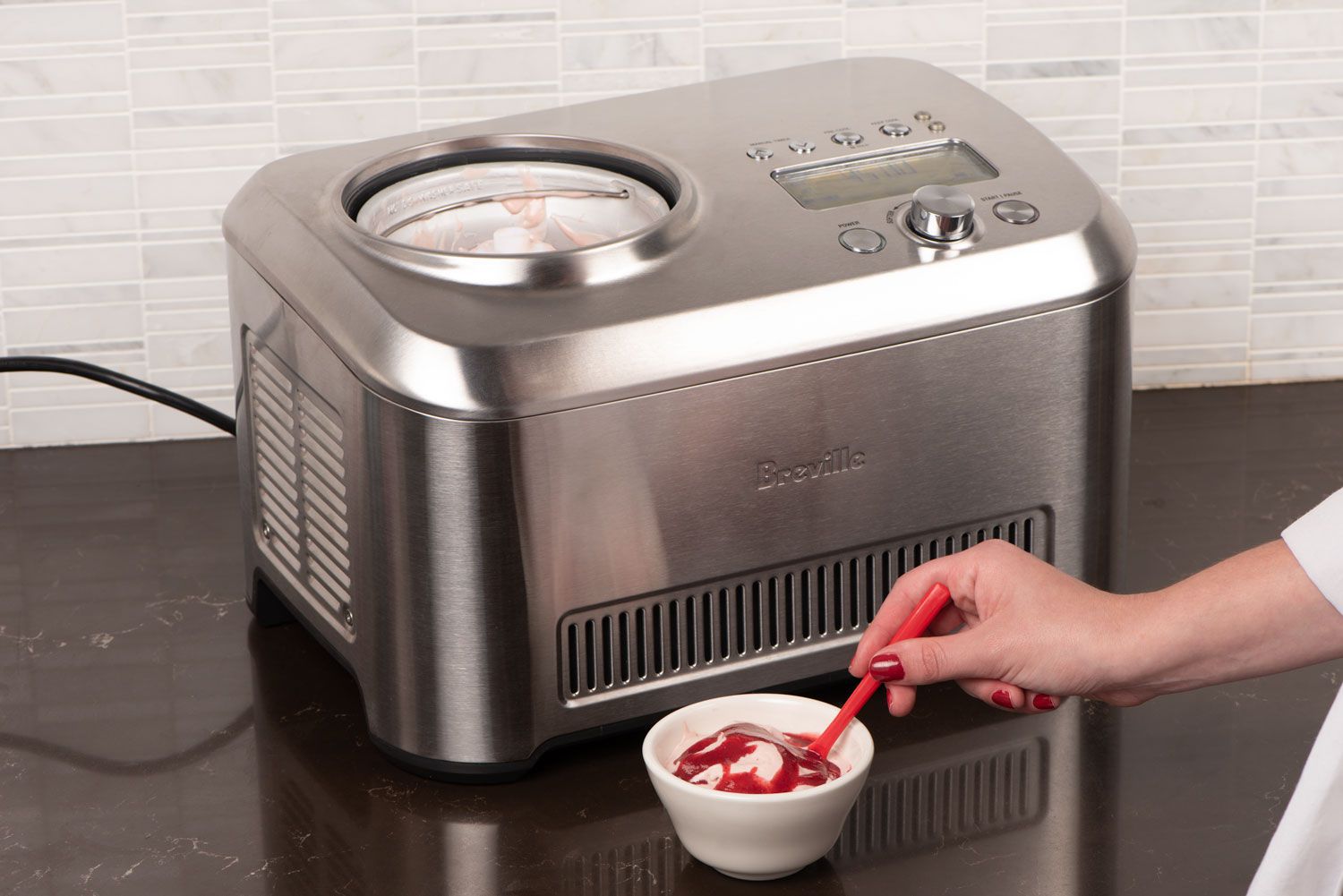
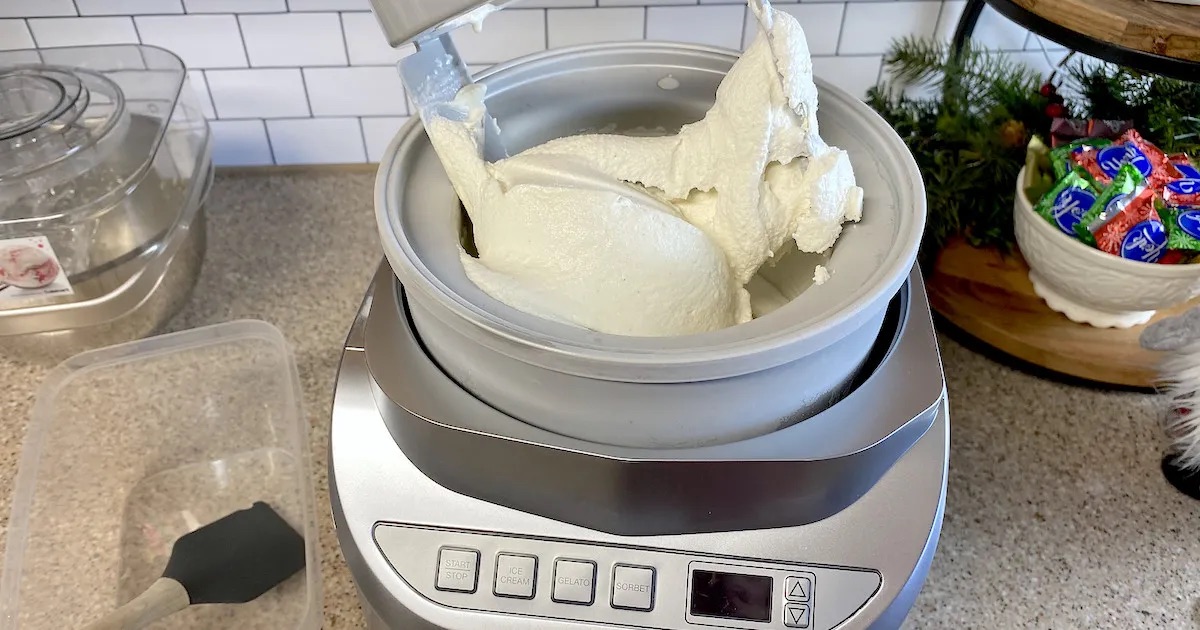
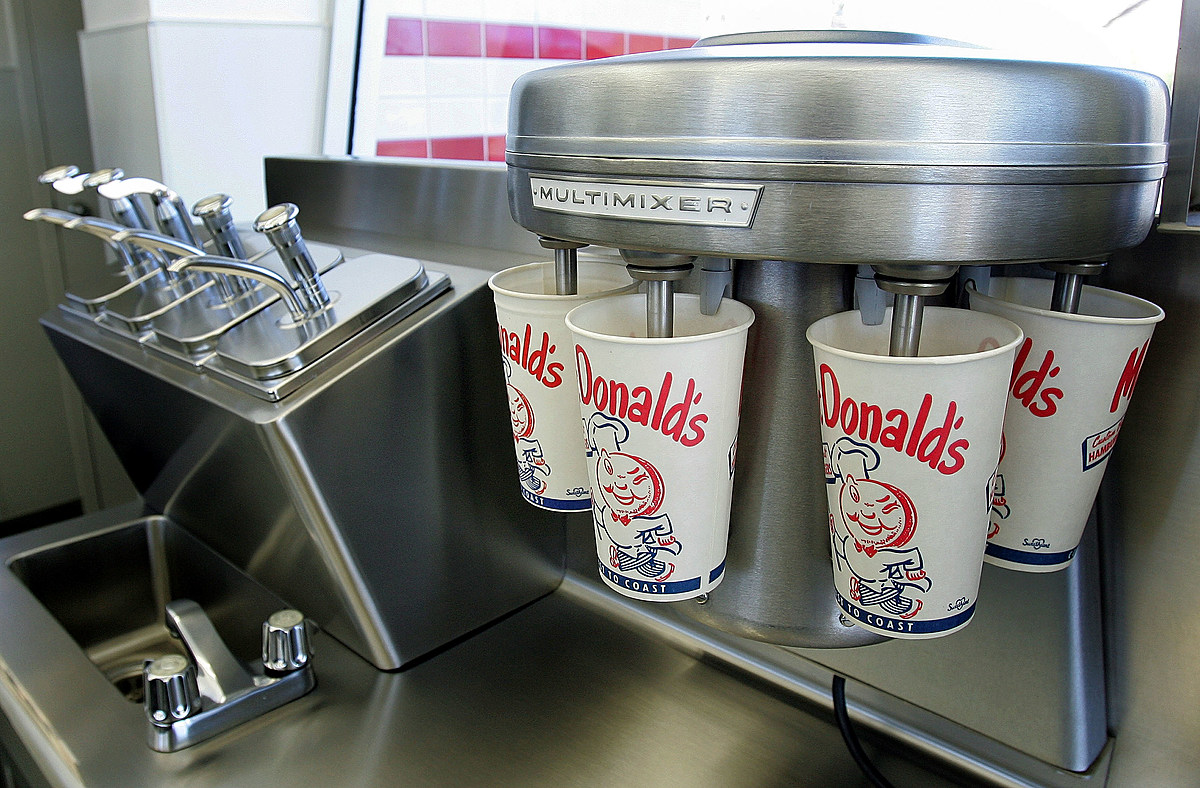
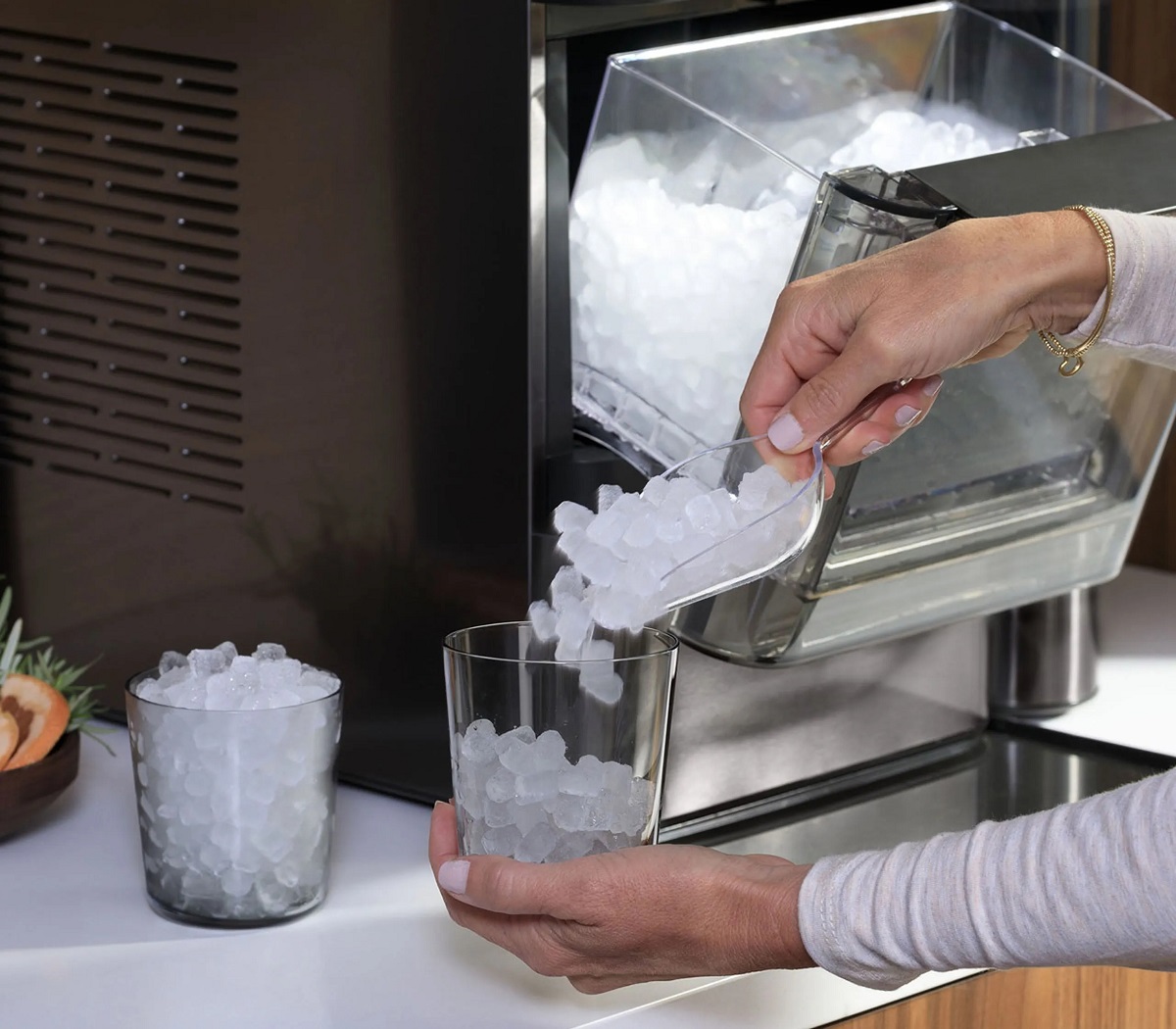
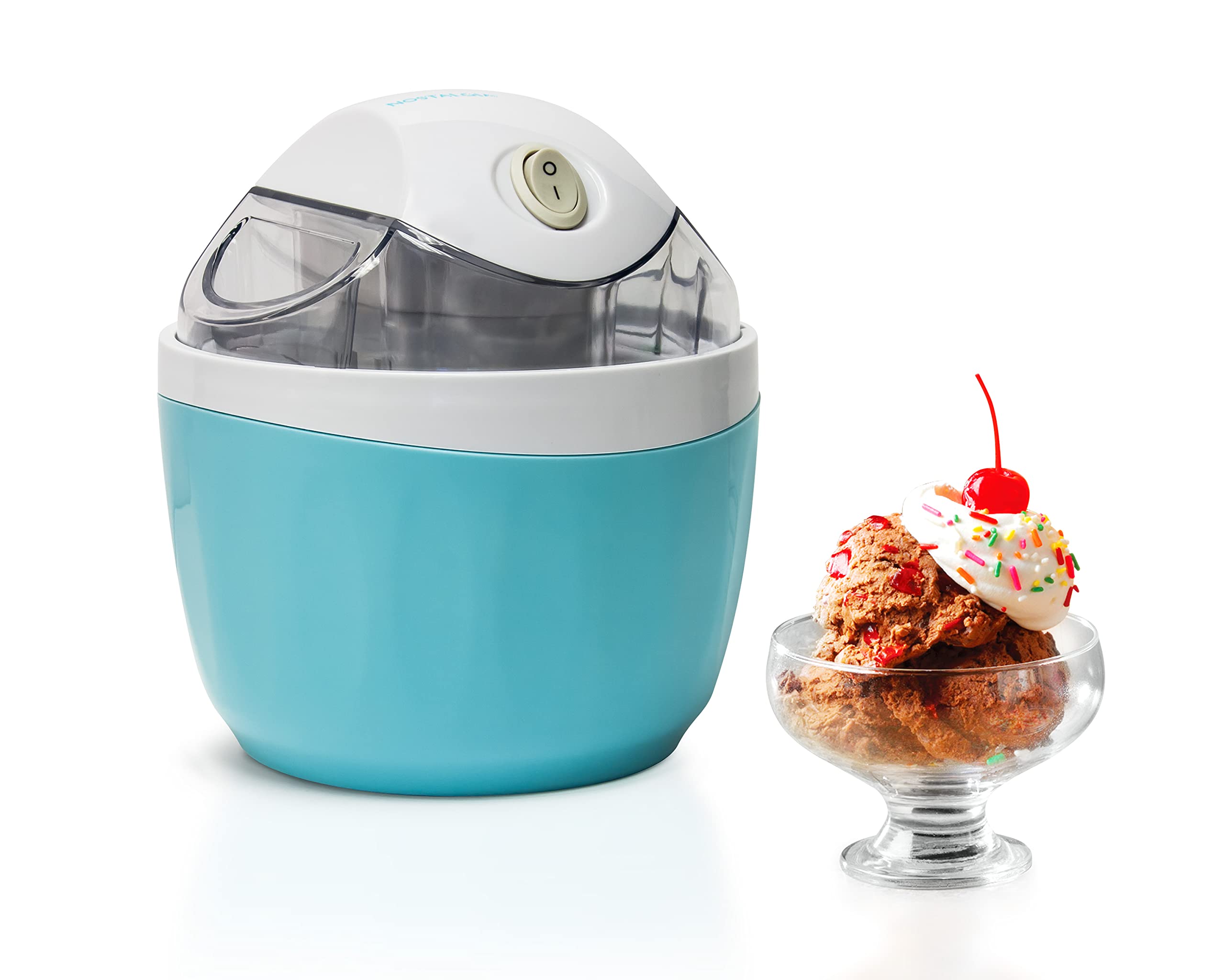
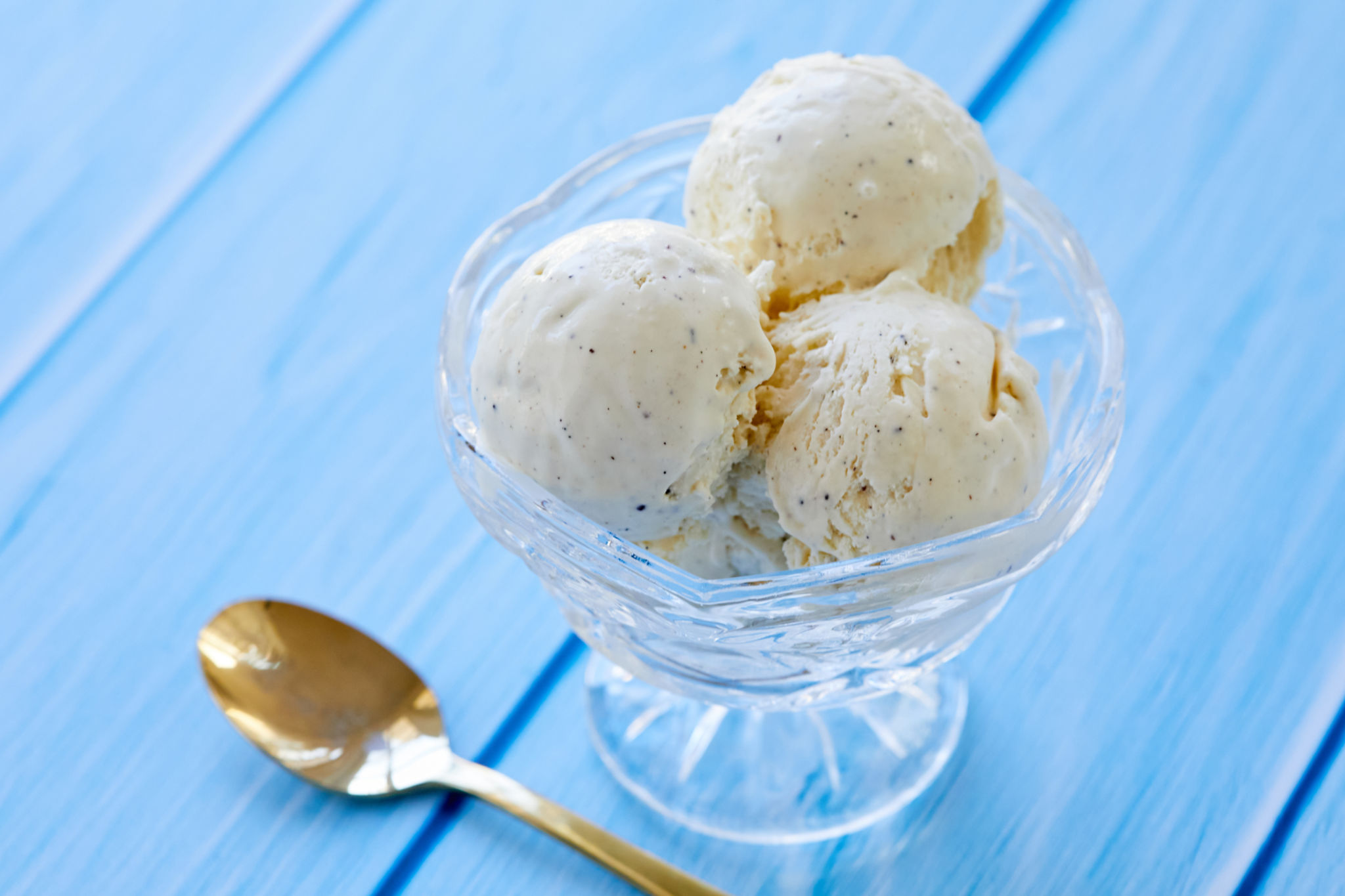
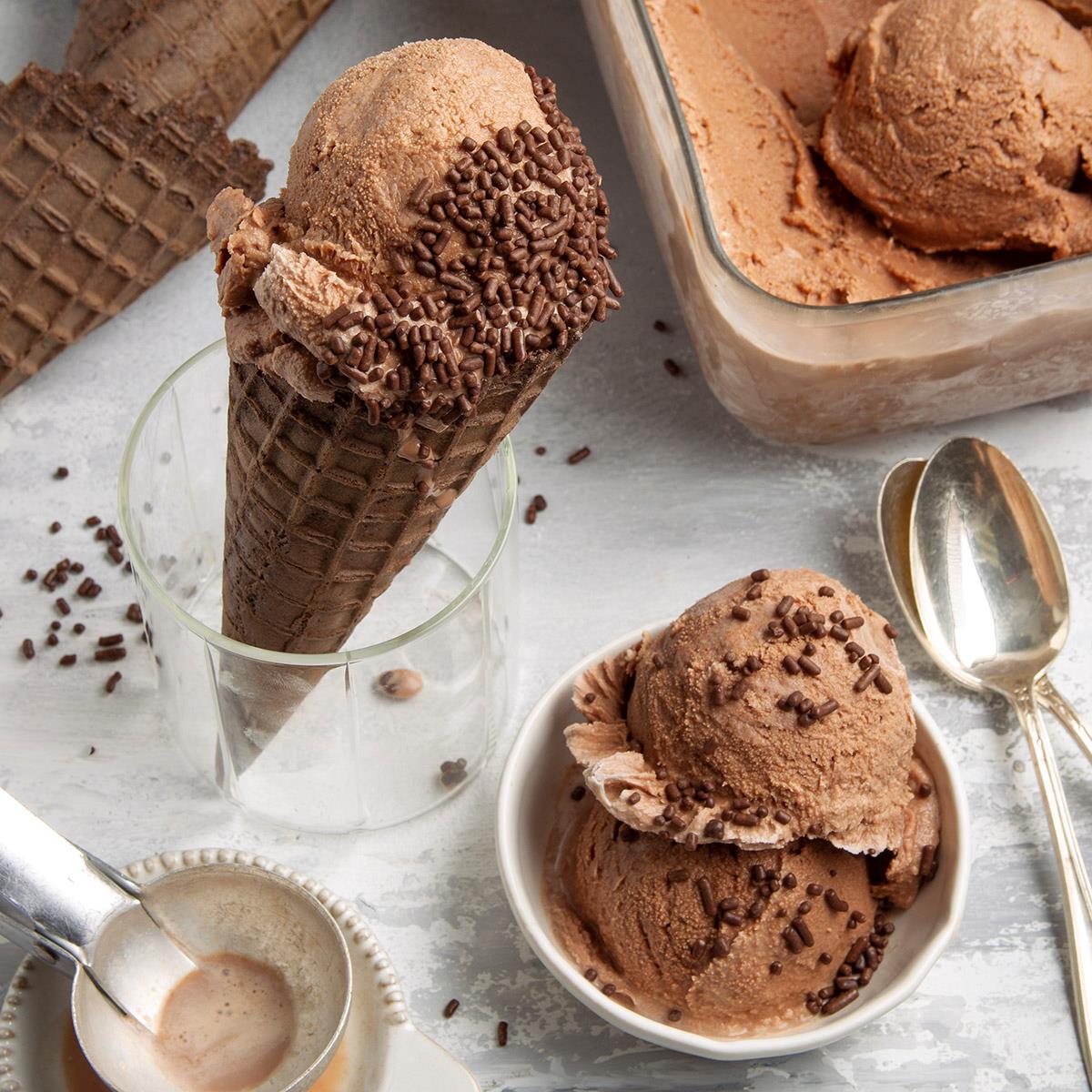
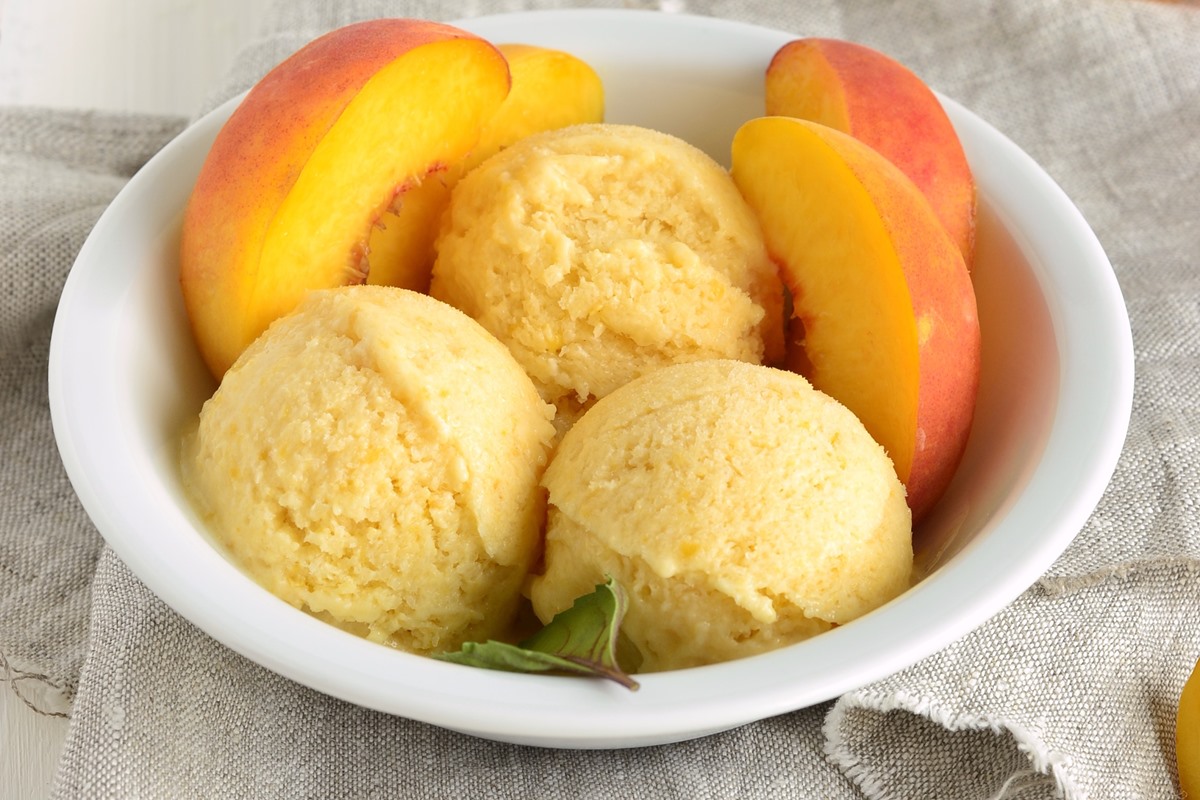
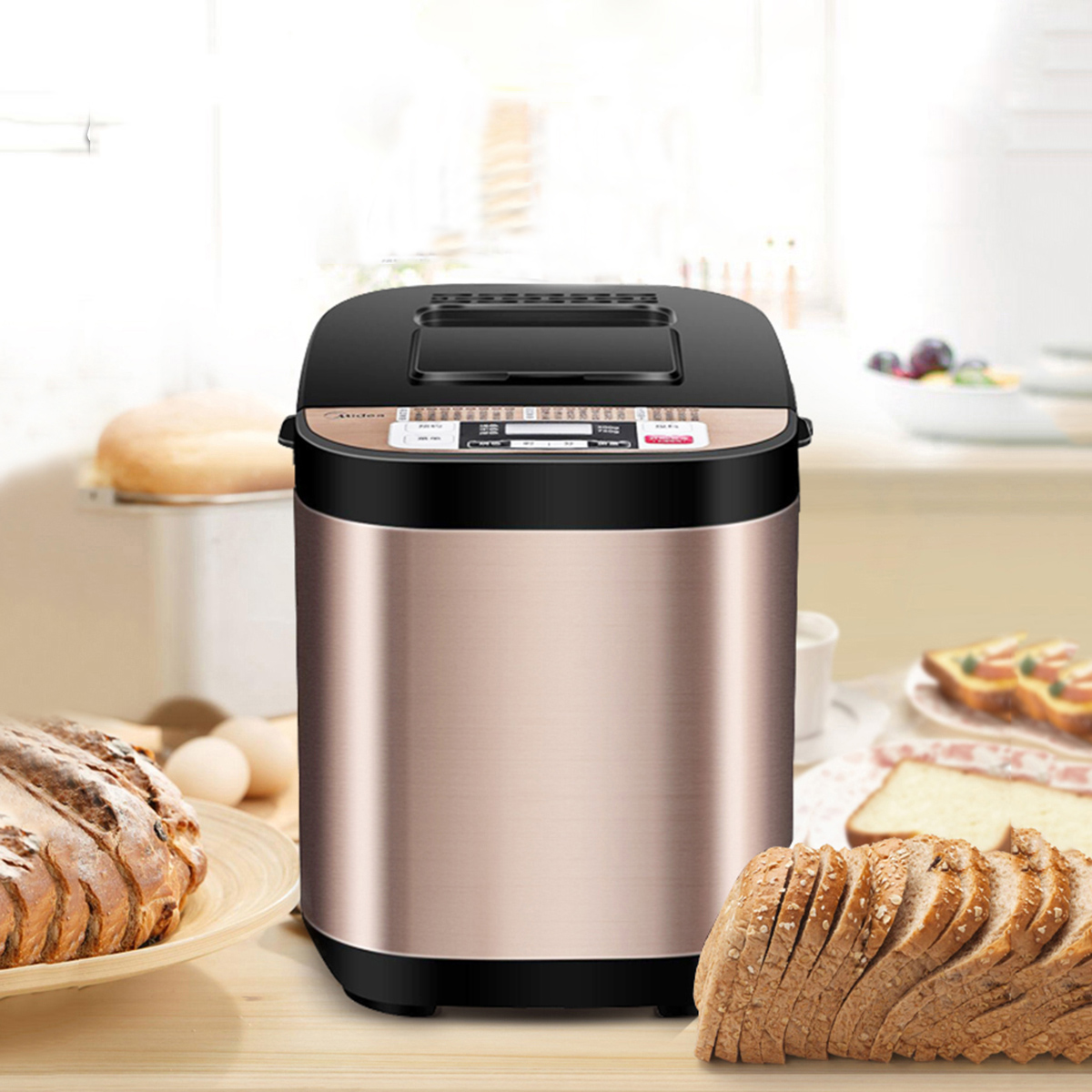
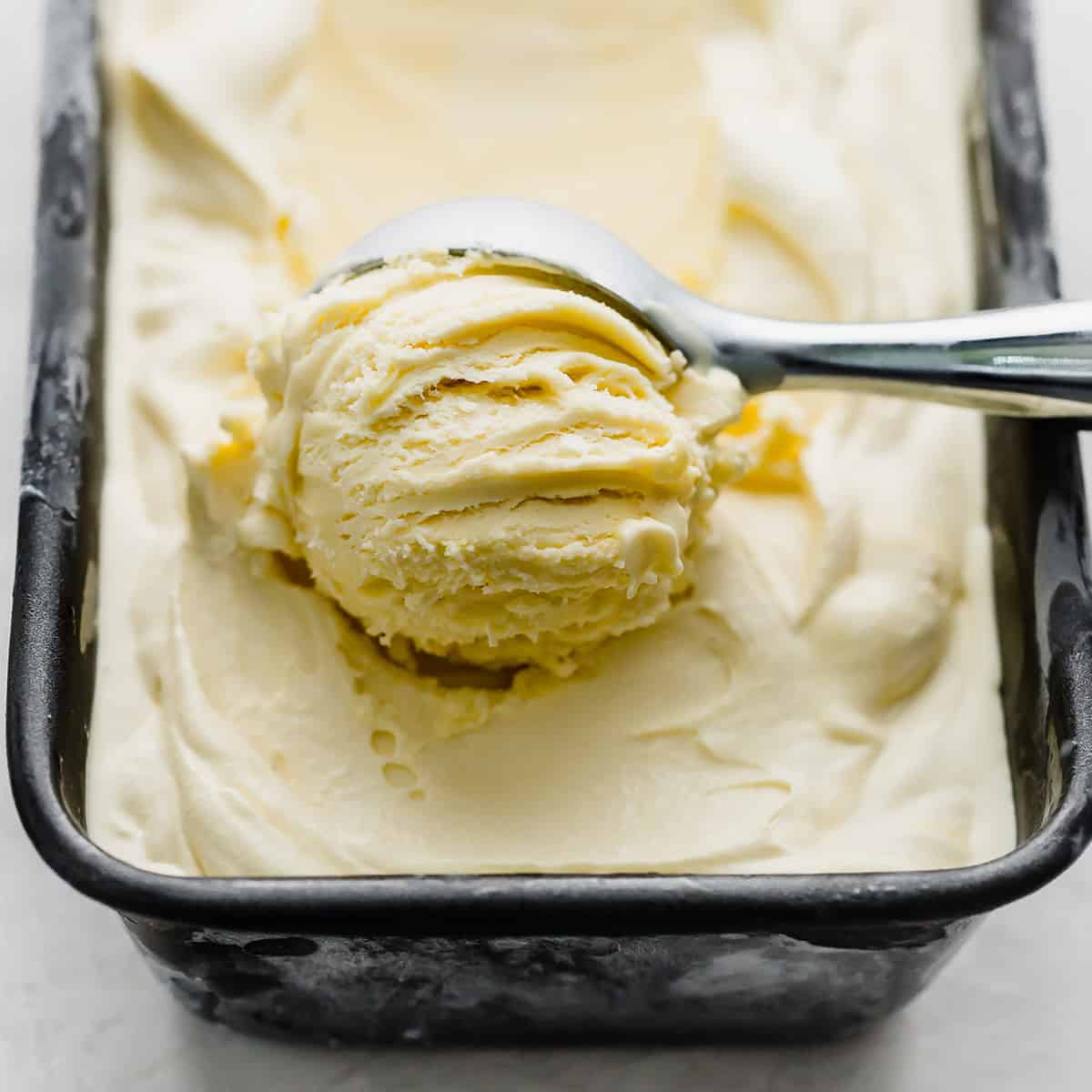

0 thoughts on “How Does Ice Cream Machine Work”